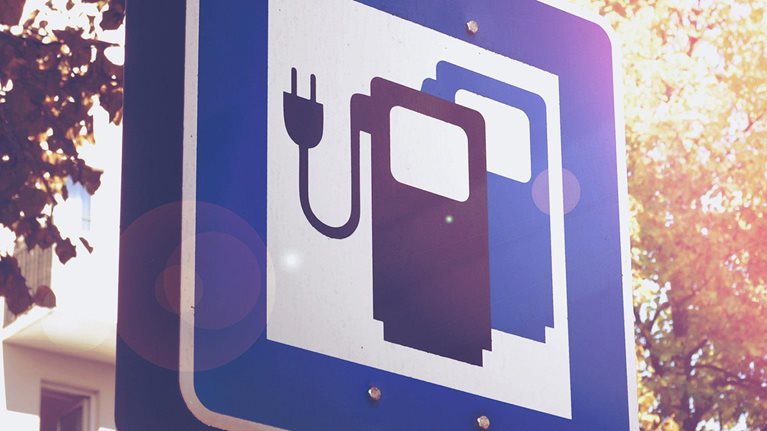As slowing economic growth becomes the new norm in China, the Chinese passenger-vehicle market has bid farewell to years of high-speed growth and entered a new phase of development.
In the short term, this era is characterized by falling overall sales. But this is more a pause for breath than the end of the road, as the potential for growth remains strong (Exhibit 1).

Moreover, the proportion of new buyers is declining, and attracting and maintaining the loyalty of existing car owners is becoming increasingly important.
Meanwhile, Chinese automakers face an urgent challenge to reframe their strategy toward autonomous, connected, electric, and shared (ACES) vehicles and technology if they are to secure the revenue they need to compete on the world stage.
In light of this transition, which entails a period of intense competition and a narrowing of opportunity for weak and challenger brands, automotive executives of both foreign and domestic brands must strive harder to understand their customers and communicate their advantages.
The McKinsey 2019 China Auto Consumer Survey, upon which our new report, China Auto Consumer Insights 2019 (PDF–3.5MB), is based, offers insights into Chinese automobile consumers’ behavior and preference at every stage of the customer journey.
This year, our sample spanned 2,500 respondents of varying demographics and vehicle-purchase experience in 20 major Chinese cities, aiming to assess their attitudes to brand, choice of channels, product preference, price sensitivity, and after-sales behavior.
China remains the world’s largest automotive market, and it exhibits strong demand from both prospective and existing car owners, and for both new cars and, increasingly, used vehicles. As such, we believe the current downturn will be short-lived, and the future of automotive in China remains bright.
Below are some recommendations that will assist decision makers as we move into the next phase of development in the world’s largest automotive market.
Segment and serve both existing and prospective car owners
The slowdown is temporary and demands improved understanding of both existing and prospective car owners. China’s car parc, or the proportion of car ownership per thousand people, remains relatively low. Considering existing car ownership and the status of highway infrastructure, the potential for car-sales growth is robust. Moreover, Chinese consumers remain attracted to the idea of car ownership on grounds of passion for driving, safety, and convenience, suggesting incremental long-term growth. Our survey shows strong willingness for existing owners to trade up toward a price range of 200,000 to 300,000 RMB ($28,000 to $42,000), as Exhibit 2 demonstrates. The ability to attract prospective customers while maintaining the loyalty of existing car owners is critical for OEMs at this stage.

Reshape brand perception and penetrate customers’ pre-purchase mind-set
China’s passenger-car market is becoming increasingly concentrated as consumers develop deeper loyalty to brands, especially in the domestic segment, where leading brands take nearly 80 percent market share. The current slowdown and fierce competition is pushing market consolidation as weaker brands are squeezed out. Chinese consumers tend to have only two to three brands in mind when they set out to buy a car, and nearly 60 percent of final purchases are sourced from brands in this group. Improving brand perception and top-of-mind awareness, consequently, is vital.
Innovate around omnichannel and improve customer experience
Although online channels are proliferating across all aspects of the customer journey, offline channels continue to play an irreplaceable role at every stage of the customer journey. Integrating both online and offline touchpoints to create an omnichannel experience that meets the changing needs of consumers, and introduces innovative service models, is essential.
However, online channels still exhibit multiple pain points, such as information overload and inefficient communication. OEMs must balance online and offline resources in order to achieve optimal impact.
Prioritize ACES functions to drive genuine value
China’s electric-vehicle (EV) market has been growing rapidly thanks to increasing consumer acceptance and knowledge, and strong government support. As their awareness improves, and policy support is withdrawn, consumers are becoming more rational in their choices regarding new energy vehicles. We expect A- and B-class EVs, or those vehicle sizes most suited to daily use, to dominate. Crucially, consumers are generally unwilling to pay for autonomous driving and connectivity services, making monetization models a key conundrum for automakers to solve. Developing a deeper understanding of customer needs, and improving their experience around ACES functions accordingly, will be key to driving profitability.
Fix pain points to unlock booming used car growth
About one in every five car buyers will now consider buying a used car. Our survey suggests sellers’ major concerns are speed and efficiency, rather than securing the highest price, while potential buyers are put off by a lack of mechanisms to allay fears relating to lack of trust. Addressing these demand- and supply-side pain points is critical for auto enterprises to unlock additional revenue streams.
As the Chinese automotive market enters a new phase, we will continue to unearth insights into what makes Chinese automobile consumers tick. Our report presents our latest findings, suggestions and thoughts on consumer behavior, branding, channel operations, R&D, and business innovation in the world’s largest automotive market.
Download China Auto Consumer Insights 2019, the full report on which this article is based (PDF–4.3MB).


